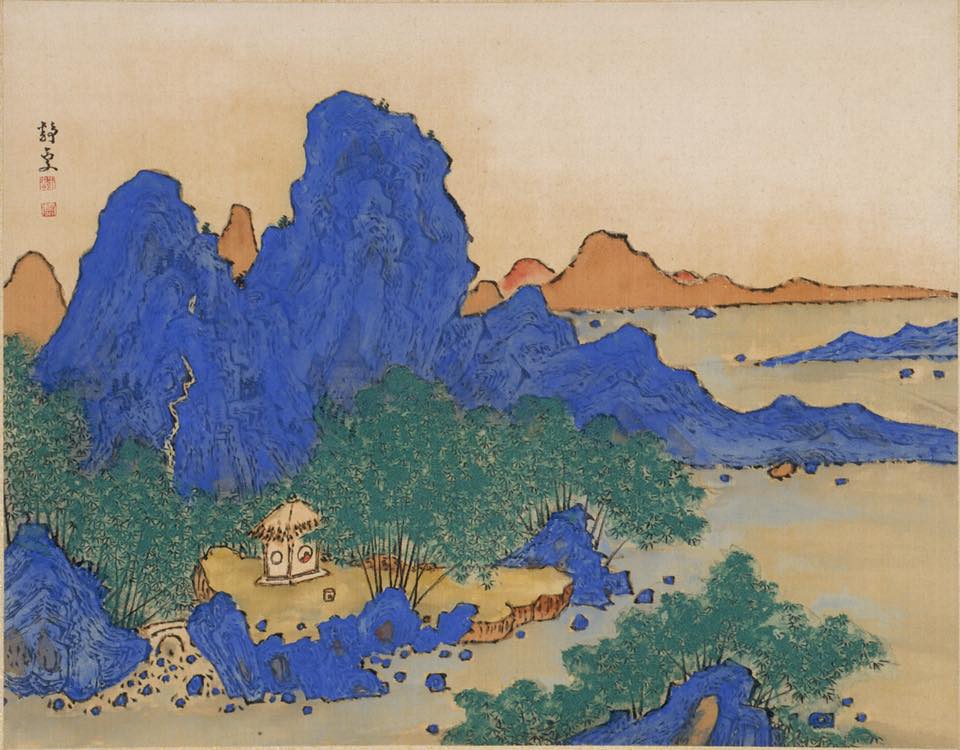
Fukuda Kodöjin, Japanese, 1865-1944, Meiji period,1868-1912, White Cloud Album and Colored Cloud Album. 2 albums; ink and color on silk. On view at the Princeton University Art Museum
If you find yourself in New York City during the holidays, here is your guide to Asian art exhibitions on view this month in the metropolitan area's museums. We have selected one exhibition from each institution, prioritizing exhibitions that will close—and must therefore be enjoyed—before the March 2019 edition of Asia Week New York. We wish you an art-filled holiday season!
ASIA SOCIETY
The Progressive Revolution: Modern Art for a New India
Asia Society presents a landmark exhibition of works by members of the Progressive Artists' Group, which formed in the aftermath of India's declaration of independence in 1947.
BROOKLYN MUSEUM
Kwang Young Chun: Aggregations
South Korean artist Kwang Young Chun combines hundreds of paper-wrapped parcels to create sculptural compositions, called Aggregations, that look like crystal formations, asteroids, or the surface of the moon.
CHINA INSTITUTE
Art of the Mountain: Through the Chinese Photographer’s Lens
In Chinese legend, mountains are the pillars that hold up the sky. Mountains were seen as places that nurture life. Their veneration took the form of rituals, retreat from social society, and aesthetic appreciation with a defining role in Chinese art and culture.
JAPAN SOCIETY
Yasumasa Morimura: Ego Obscura
Ego Obscura highlights Morimura's 30-year-long project of excavating “the self” from layers of art history, Japanese postwar history, and personal history.
THE METROPOLITAN MUSEUM OF ART
Japanese Arms and Armor from the Collection of Etsuko and John Morris
Presenting a wide array of samurai armor, blades, and accoutrements dating from the fifteenth to the nineteenth century, this exhibition celebrates the promised gift of thirty-seven objects from the collection of Etsuko and John Morris.
NEWARK MUSEUM
KIMONO REFASHIONED 1870s-Now!
Featuring a diverse range of fashions, this exhibition showcases more than 40 extraordinary garments created by more than 30 Japanese, European and American designers from the world-renowned collections of the Kyoto Costume Institute and the Newark Museum.
PRINCETON UNIVERSITY ART MUSEUM
Picturing Place in Japan
The representation of place has been a dominant subject of Japanese painting throughout history. Sometimes these scenes evoke the topography of an actual location, but often the place depicted was imagined or based primarily on past images.
RUBIN MUSEUM
The Second Buddha: Master of Time
Celebrated by Tibetans as “The Second Buddha,” Padmasambhava, the Lotus Born, is believed to have been instrumental in converting the land and people of Tibet to Buddhism. His legends carry universal relevance about triumph over obstacles, the power of human emotions, transformation, impermanence, achieving liberation from life and death, and notions of time—all of which transcend specific cultures and eras.
